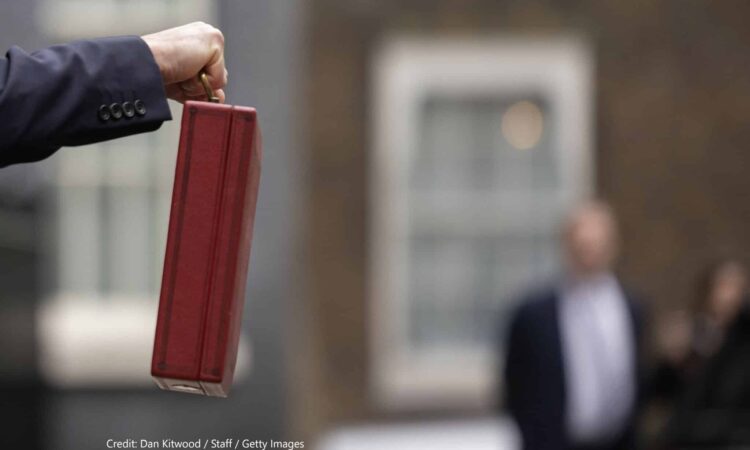
Ben Zaranko considers the fiscal and monetary policy challenges the UK faces, the immediate and longer-term issues politicians will need to address, and the potential implications of the choices they might make. This piece is taken from our new report with Full Fact ‘Policy landscape 2023‘.
What is the situation now?
The UK economy is in something of a bind. Inflation has remained stubbornly high. Household living standards are in the middle of the largest two-year fall since records began in the 1950s. The Bank of England has raised its interest rate to a level not seen in 15 years in an attempt to squeeze demand out of the economy and return inflation to the 2% target – as per its mandate. The public debate around interest rate increases has so far focused on households with mortgages, many of whom will see big increases in monthly repayments as they roll off fixed term deals. This is, however, only one of the ways in which higher interest rates will affect households, firms and the wider economy.
Higher inflation and increased interest rates are also pushing up the government’s debt interest bill. The Office for Budget Responsibility (OBR) recently pointed out that the UK government is particularly vulnerable to these shocks: the rise in global interest rates has fed through to the UK’s debt servicing costs more than twice as fast as in other countries, despite many of those countries having a higher level of debt than the UK. That’s largely because, as a result of quantitative easing, the UK has more debt on which payments immediately increase when the Bank of England raises interest rates. The UK also has more debt in the hands of private foreign investors, and more debt on which payments are directly tied to the rate of inflation, which adds to the vulnerability of its position.
This spike in debt servicing costs, along with sluggish economic growth, has worsened the government’s fiscal position. The government’s main fiscal target is to have debt falling as a fraction of GDP in five years’ time. In the latest set of forecasts, the government was on course to meet this target by the finest of margins. That’s despite taxes rising to historically high levels, driven in large part by a big increase in the rate of corporation tax from 19 to 25% and the freeze in income tax thresholds. And, it’s despite the budgets for public services – many of which are in a parlous state post-pandemic – being fixed in cash terms and therefore squeezed by higher-than-expected inflation. In addition, those forecasts are based on a set of provisional spending plans for after 2025 which would, if adhered to, almost certainly mean cuts for some public services. The unfortunate truth is that just to stop debt rising, Chancellors now need to run much tighter fiscal policy than they did in the past.
What is the state of the political debate?
While there is a way to go to the next election, as it stands, both main parties are committed to a similar set of fiscal rules, spending plans, and tax rises. Both Labour and the Conservatives are committed to having debt falling as a share of GDP – a fiscal target that, if actually adhered to, is likely to bind the hands of whoever is Chancellor after the general election. Labour have offered a few small tax rises around the edges to fund specific spending promises (e.g. charging VAT on private school fees), but so far no big revenue raisers. Both parties are – for now – promising to stick to the same set of (tight) spending plans, with one notable exception. Labour have promised to increase ‘green’ investment to help the UK’s transition to net zero, scaling up over time to reach a total of £28 billion per year by the late 2020s.
What are the immediate and long-term issues that need to be confronted?
The UK is not short of policy challenges. The most pressing immediate challenge is bringing inflation back to target and supporting vulnerable households through a difficult economic period. Beyond that, four things stand out (though the list could be much longer).
First, economic growth. The UK needs to find a way to get more of it. It’s easier said than done, but this should be front and centre of the policy agenda.
Second, the transition to net zero carbon emissions is going to mean difficult decisions and trade-offs. It will also bring with it a raft of fiscal challenges. To take just one example, the shift to electric cars is going to mean the loss of tens of billions of pounds of revenue from fuel duties; there is no hint of a plan to address this with road pricing or anything else.
Third, the demographic challenge. The number of people aged 85 and over is projected to increase by 19% between now and 2030, and 57% by 2040. That is almost certain to require us to spend more on the NHS, social care and pensions. Geopolitical instability could mean we have to spend more on defence as well.
Fourth, the resulting political challenge. Structural factors are putting enormous upwards pressure on government spending. More spending will eventually mean higher taxes, unless we radically pare back the scope of what the government actually does. Notably, rather than pare it back, the government decided in March to extend the welfare state, by hugely extending its childcare offer.
Neither party seems willing to confront the public with the reality that even maintaining the quality of our public services, let alone substantially improving them, almost certainly means higher rather than lower taxes. Talk of pre-election tax cuts feels increasingly detached from that fiscal reality.
By Ben Zaranko, Senior Research Economist, Institute for Fiscal Studies.
This piece was originally part of the report ‘Policy landscape 2023’ with Full Fact.






